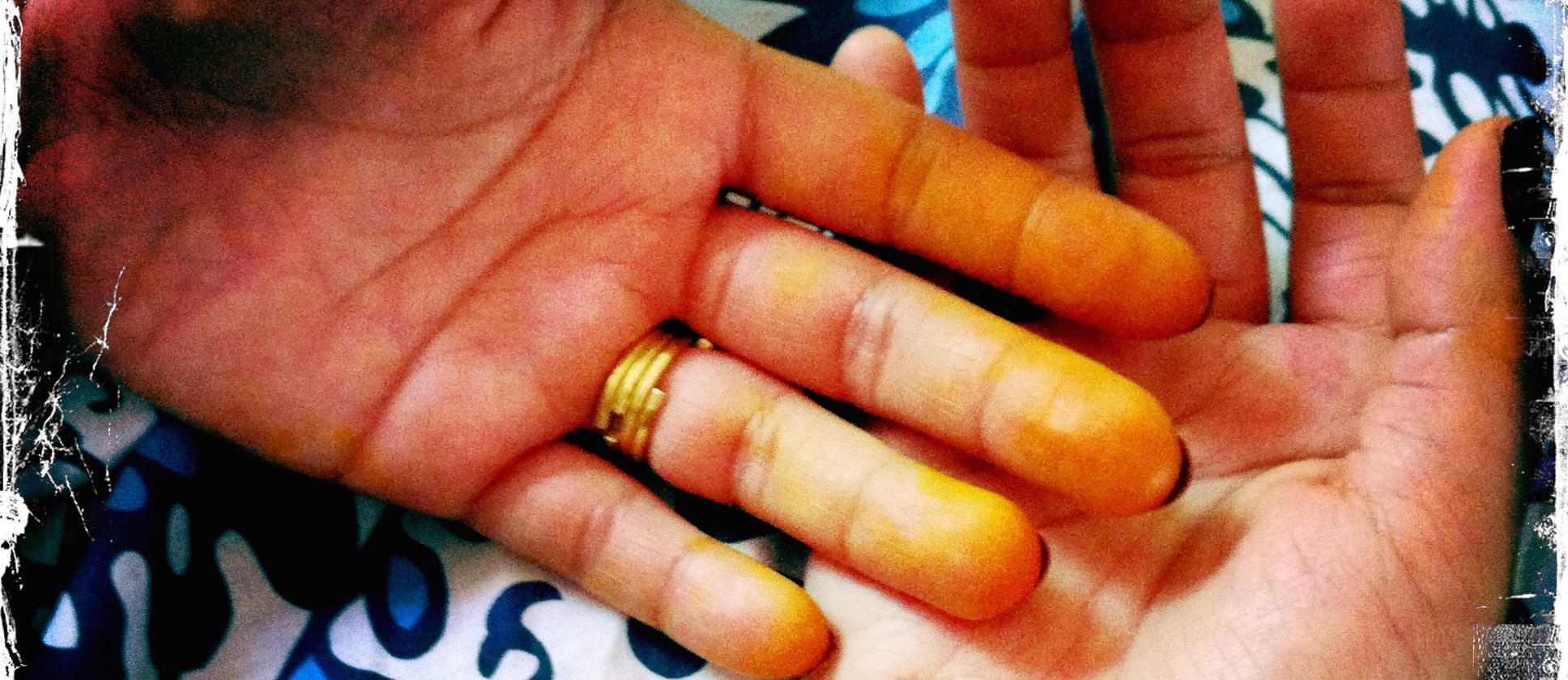During the last decade, the drug industry has followed an assumption that a single drug hitting a single target was the “rational” way to design drugs. We’re learning that Mother Nature may be a bit too complicated for that. “Strategies for targeting single genes or proteins ignore a very important fact that most, if not all diseases, involve a sophisticated network system.” For example, one little family of immune molecules involves about 50 different keys fitting into about 20 different locks, often acting with redundancy, making selection of an appropriate drug to antagonize one key or one lock ineffective in the long run. A whole list of agents has been developed to target a specific molecule for the treatment of inflammatory bowel disease, for example, but they have all flopped. That’s why drug companies are now working on so-called “promiscuous” drugs that try to affect multiple pathways simultaneously.
Meanwhile, since ancient times, natural agents derived from plants—fruits, vegetables, spices, beans, and grains—have been preferred as potential therapeutics for most chronic diseases, not only because of their safety, affordability, and long-term use, but also “for their ability to target multiple cell signaling pathways, a therapeutic virtue.” (See Magic Bullets vs. Promiscuous Plants).
One example of a successful promiscuous plant-based drug is aspirin. It doesn’t just target inflammation and offer pain relief, but can act as a blood thinner and help prevent preeclampsia and even some types of cancer. Curcumin is another hopeful plant-based medicine. Aspirin is an extract of the willow tree bark (and is present in other fruits and vegetables); curcumin is an extract of turmeric root. It’s so anti-inflammatory that it may even work through the skin—a traditional use was to wrap sprains and injuries with turmeric soaked poultices, a use that continues to this day. Curcumin is so anti-inflammatory that it can help counter the effects of mustard gas.
In a petri dish, curcumin extinguishes the response of spleen cells to an inflammatory cytokine. Promising effects have also been observed in patients with a variety of inflammatory diseases. One of the great things about curcumin is that it also appears to be very safe. One of the reasons may be that despite its powerful pharmacological effects, the same pathway promiscuity that may account for its effectiveness may act synergistically to neutralize side-effects. For example, turmeric has been traditionally used as a bronchodilator to open airways in conditions like asthma. Many of the adrenaline-like drugs that do the same thing can raise blood pressure. The reason turmeric doesn’t may be because it has different components with opposing activities, such as calcium channel-blocking effects that may actually lower blood pressure, and so the side effects may cancel each other out.
This strength in promiscuity, though, is also a weakness. The U.S. Food and Drug Administration has been reluctant to approve plant extracts, which by definition are composed of mixtures of different compounds. It’s a Catch-22. One drug, one chemical, one mechanism of action and you can patent it, get FDA approval, and make a billion off it, but it may not work very well. On the other hand, there might be a safe, natural alternative that works better, but industry and the government may not be interested.
However, there is hope on the horizon. The FDA approved a green tea ointment as a prescription drug for the treatment of genital warts (See Treating Genital Warts with Green Tea), making it the first prescription plant approved in the United States. If you think that’s neat, check out Treating Gorlin Syndrome With Green Tea.
So have drug companies abandoned their model and started pouring money into plants? No. “Having discovered that so-called magic bullet has been largely unsuccessful, they just propose creating non-selective drugs. Instead of magic bullets, magic shotguns.”
I go into more detail about the Catch-22 in my last video Plants as Intellectual Property – Patently Wrong?
My video Power Plants shows how plant foods are not to be underestimated.
More on turmeric curcumin and inflammation here:
- Which Spices Fight Inflammation?
- Turmeric Curcumin and Rheumatoid Arthritis
- Turmeric Curcumin and Osteoarthritis
In health,
Michael Greger, M.D.
PS: If you haven’t yet, you can subscribe to my videos for free by clicking here and watch my full 2012 – 2015 presentations Uprooting the Leading Causes of Death, More than an Apple a Day, From Table to Able, and Food as Medicine.
